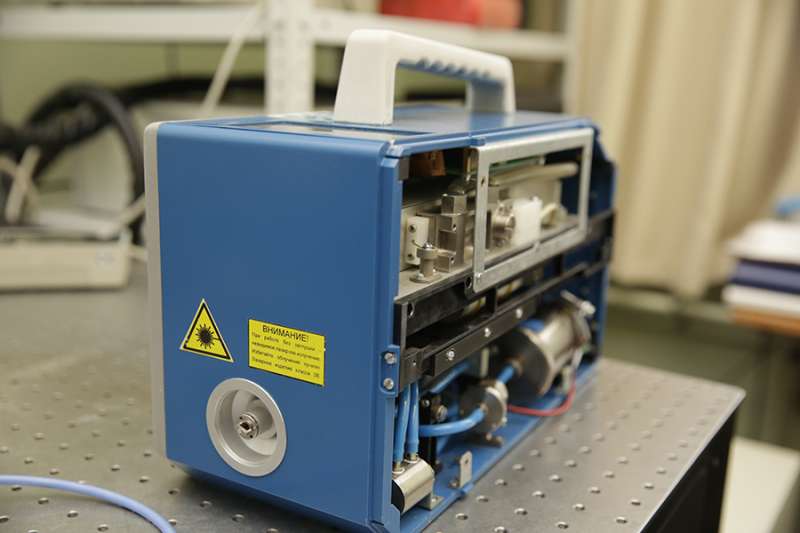New electronic device senses explosive vapors

Scientists from the National Research Nuclear University MEPhI (Russia) have presented a detector that can distinguish smells better than a service dog. A small device, remotely resembling a projector, was developed by the Department of Physics of Micro- and Nanosystems (№ 81) of MEPhI.
"It's a sensor for detecting explosive vapors and identifying them," says contributor Gennady Kotkovsky. "But we call it an electronic nose."
The device is able to sense and recognize traces of almost all types of explosives, from saltpetre to hexogen. Hexogen cannot be detected even by even the most advanced American technology.
"Trotil is identified by virtually all spectrometers," Kotkovsky says. "It's all about the concentration of fumes." TNT has a large concentration of it; the fumes are volatile. Therefore, it is easy to detect using standard methods. Hexogen;s concentration of fumes is much lower. Therefore, current instruments, and even dogs, could not detect it. Thus, a special detector is needed.
"An outgoing beam evaporates the molecules of substances, thereby increasing their concentration," Kotkovski explains. "And after that, they are easy to recognize."
The scientist brings a small metal jar to the sensor. "It's a simulator of fumes," he comments. "There is a very small amount of hexogen." A red line appeared on the screen.. Near the schedule, the inscription "Alarm" displayed, and the source of the alarm appeared: "RDX," the scientist said. "This is the chemical name of hexogen."
According to physicists, U.S. intelligence agencies use similar spectrometers, but without laser ionization. In addition, they determine most substances in a rather conservative way.
"The police wipe the surface with a cotton napkin, which is then injected into the heater of the appliance," Kotkovsky says. "Thus, everything that is on a napkin evaporates and is recorded. But this is very lengthy and a dangerous technique."
"It can be used in biochemistry to detect pathogens in the air. If it is reformatted, it will be able to detect viruses from a distance," Kotkovsky says. "And we are already doing this work."
Provided by National Research Nuclear University


















